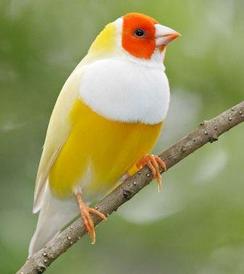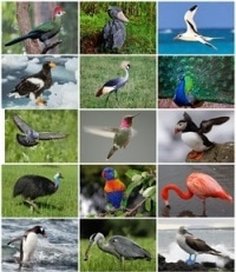What is a Bird? |

Custom Search
|
|
We all know that birds have wings, feathers, lay eggs are bipedal like humans and unlike reptiles, they are warm blooded creatures.
They are vertebrates that belong to the class Aves and there are more than 10,000 extant species of birds. From these, around half are Passeriformes, also known as perching birds. Traditionally bird species were divided into 30 orders but some more recent molecular studies groups them anywhere from 23 to 40 orders. With thousands of bird species, it's rather normal that they can vary greatly in size. Ranging from the 2 inches (5 cm) of the Bee Hummingbird (Mellisuga helenae) to the largest species, the Ostrich (Struthio camelus) which grows up to 9 feet (2.75 m) in size and is also flightless. According to fossil records birds first emerged approximately 160 million years ago during the Jurassic period. It was then that a group of small, feathered dinosaurs evolved from within the theropod dinosaurs.
This large group included such beasts as the Tyrannosaurus Rex and Velociraptors made famous by the Jurassic Park movie franchise. As strange as it may sound birds are actually the closest living relatives of crocodilians. Paleontologists consider birds to be the only dinosaur clade that survived the K-T extinction event that took place around 65 million years ago. This single event leads to a mass extinction of about 3/4 of the species of plants and animals on Earth. Today birds inhabit all types of ecosystems ranging from the Antarctic to the Arctic region, which shows their adaptability.
|
Did You Know?
The Komodo dragon is considered the world's biggest lizard species and also one of few venomous lizards. |


